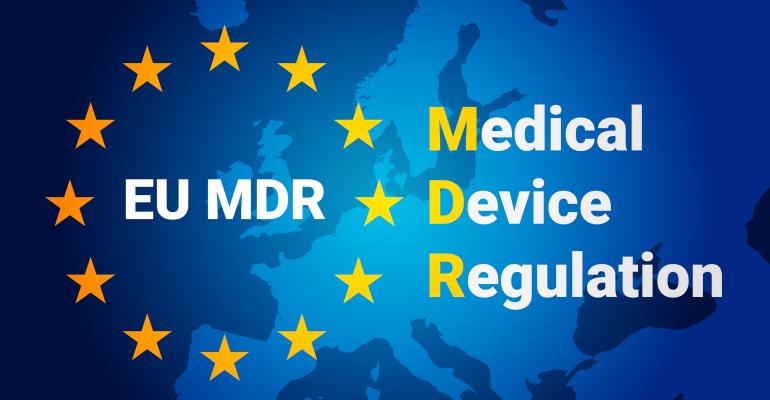Recently, the European Commission recommended that the EU Medical Device Regulation (MDR) extend the deadlines for MDMs to become compliant. Under the proposed extension, Class III and Class IIb will have until May 2027; Class IIa and Class I will have until May 2028. The extension was proposed due to notified body capacity being insufficient, product shortages and time to implement additional measures to address the structural problems with regulations.
This extension will benefit device manufacturers if the device was certified by a notified body under MDD (Medical Device Directive 93/42/EC) or AIMD (Directive on Active Implantable Medical Device 90/385/ECC) with a valid certificate at the date of application of MDR (i.e. May 26, 2021). Of course, there are always exceptions as defined in Article 97 and 59(1) in MDR. Devices without any alternatives or predicates where they are critical to patient health and where it is not financially viable for hospitals to change quickly.
The new EU MDR regulations originally were put in place to increase medical device safety and effectiveness in the EU Market. Thus, for a manufacturer to continue to sell its device in the European Union, a CE mark indicating certification to the new MDR must be in place by the deadline.

What does this mean when it comes to testing?
As was the case before the most recent extension, the updated regulations feature several significant changes that affect testing during the design of a new device or remediation of an existing legacy device, specifically any safety endpoint test or any other endpoint related to product integrity or sterile barrier. For instance, packaging is still considered an accessory to a medical device under MDR, as it was under the previous directives, and package validations are performed according to ISO 11607. Most all legacy devices will need to reevaluate their functional safety tests and packaging validations, particularly transportation distribution testing, in order to prepare the documentation now required under the MDR that was not required before.
- Become familiar with EU MDR. While most MDMs have likely started by now, if you have not, the time to start is now. For despite the deadline being moved back once again, given the extensive amount of work that you will need to perform, the capacity limitations of notified body reviews, and finite 3rd party lab resources, if you do not start now, you likely will not finish.
- Conduct a gap analysis to determine what previous testing was done on a device prior to its approval under the previous directive. Then identify the types of new test data that will be necessary for MDR compliance. At a minimum, you will likely need to redo transportation testing on your device, so that will likely be the best place to start.
- Read and familiarize yourself with the standards such as ISO 11607, ISO 80369, ISO 8536, ISO 7886, ISO 7864, etc. so you understand your validation responsibilities.
- Get all your professionals involved. packaging, R&D and design engineers should be working with colleagues in regulatory, product development, and quality as early as possible during medical device development. Also, during product design verification, conduct feasibility testing to understand the product and package interactions.
- Perform a risk assessment of the medical device you are certifying. Determine the specified attribute data for your package, identify all potential failure modes that could cause (or result from) an out-of-specification package, and then determine the sample size needed to catch those failures. The chosen sample size and resulting confidence level will depend upon the overall risk assessment (Failure Mode Effects Analysis; FMEA) that the MDM puts in place for any given device.
- Talk to your suppliers and service providers. Your vendors have a lot of knowledge. Get as much data as possible from material providers, thermoformers, package converters, and machinery providers. Finally, work with a qualified and knowledgeable test laboratory that understands the regulatory requirements, and can further guide you to assure you meet specific regulatory requirements.
- Write your protocol and establish clear acceptance criteria. Your protocol should have the following: a purpose, a scope, a reference section listing all standards and test procedures, descriptions of all materials and equipment, all attribute data, a sequence of events or a flow chart of what will transpire, and a summary of the chosen sample size and acceptance criteria. It is important to document everything, as the protocol can help you manage your processes with outside vendors.
- Know your worst cases. Review your product families to define all worst-case scenarios. It is a hard question to answer, but you are looking for what potentially can cause the most adverse effects to the package or product.
In the end, medical device professionals need to understand what they are putting into packages and verify device functionality has not changed over time with legacy devices. If you do your homework with materials and processes and understand what you need to do before validation, you will build a successful testing program that meets the EU MDR requirements.
Whether MDR equates to a small remediation or a large remediation program, DDL has the capacity and capability to serve our client to meet their desired MDR timelines. For more information, or to answer any testing questions you may have, please contact us or call us at (800) 229-4235.